Campus Gardens Support Timberwolf Pantry
 |
| Shannon Autrey, an Arkansas Cooperative Extension Services agent, plants fall plants in the Kirk Building garden. |
Since 2018, the Timberwolf Pantry has provided food and hygiene
products to the UACCM community in need, ranging from canned goods and boxed
foods to basic toiletry products. The pantry has relied on generous donations,
but that recently changed with the introduction of vegetable garden beds that contribute
fresh produce.
These gardens are located outside the Kirk Building and Earl
Love Child Student Center and produce a full array of crops throughout year. They’re
maintained due to the hard work and green thumb of Shannon Autrey, the agent
with the Arkansas Cooperative Extension Services office located on campus.
Origins of the Garden
The idea came from a conversation between Autrey and
Education Instructor Kara Jones about campus gardens.
 |
| Earle Love Child Support Center Gardens. Courtesy of Shannon Autrey |
“Shannon is instrumental in promoting fresh fruits and
vegetables to all the schools in Conway County, including child care
facilities,” Jones said. “We are lucky enough to have her on our UACCM campus,
so we began talking about how gardening could be involved with the Timberwolf
Pantry, an employee supported take-what-you-need type of pantry on campus to
help with food insecurity.”
Funding and supplies came from a variety of sources. The Extension
Services office took the lead, as the beds offered students an education on
nutrition; also, the community came together. Tractor Supply in Morrilton provided
soil and a water hose. The Farm Bureau’s Women’s Committee donated plants.
On planting day, UACCM’s youngest students—children from newborn
to age six at the Earle Love Child Support Center—and their parents gathered at
the garden. The children planted seeds, marigolds, and sunflowers. The gardens
have introduced them to different fruits and vegetables and taught them the
importance of agriculture. Fresh vegetables like broccoli and lettuce are even
served in the children’s lunches.
Day in and day out, Autrey looks after the plants’ health.
She waters them the first thing in the morning when she arrives on campus and
from time to time gives the soil a little fertilizer to boost its nitrogen. She
combats pests—including a case of squash borers over the summer—and sends
samples to a lab to identify culprits that threaten growth.
But even for the gardens’ first year—typically a period ripe
with regular problems—harvests have been successful. Tomatoes grew in the
spring and summer. Lettuce, spinach, and garlic grew in the fall. Deep into
December, the gardens were still producing mustard greens and collard greens. An
adjacent herb garden has even contributed to the pantry with thyme, sage, and
oregano.
Fighting Student Hunger
Like the Timberwolf Pantry, the gardens are aimed at
combating food insecurity among students—meaning those who don’t always know
where their next meal is coming from, or if it’s coming at all—which is
prevalent on college campuses.
Students from the University of Central Arkansas’s Nutrition
and Dietetics program, Kaylee O’Hare and Jordan Bellew, have been working with
Autrey on researching the issue of student hunger.
O’Hare stated that the problem may be so frequent on
campuses because many adults return to college. With the high cost of living
expenses and a college education, people often do not have the resources to pay
for both. “It’s a sacrifice just in itself to come back to school,” she said.
“They have to think about rent. A lot of them have to take care of kids and
families. So often, the meal of the day quickly becomes the old college standby
of Ramen noodles.”
For Conway County and the state as a whole, hunger remains a
problem. According to studies, 17 percent of Conway County residents are food
insecure, Bellew said. That is just slightly below the state average, where 20
percent of Arkansans struggle to find food for their families. That makes the
state ranked second in the nation for food insecurity. In a lot of ways, it
remains a hidden problem.
“A lot of times, food
insecurity is not something that people want to admit,” O’Hare said. “Even
though there are resources, we also have to think about how we can get
resources available where they feel free to get them.”
Gardens are a Source of Education
 | ||
| Planting Day at the Earle Love Child Support Center. Courtesy of Shannon Autrey. |
The gardens are a community activity as students, staff, and
faculty can monitor the garden’s progress and learn about what it offers. While
students harvest the crop to place in the pantry, some even pick produce
straight from the beds.
“We just left the beds open, so when someone saw something
that’s ready, they are more than welcome to get it,” Autrey said. “We wanted it
to be open and available to anybody who needed it.”
There are two pantries on campus—the Library Complex and the
Kirk Building—that operate on a take-what-you-need policy. Since the pantry has
introduced fresh produce, Autrey uses one measure of success.
“Every time I would check the pantry at the end of the day
and make sure the vegetables aren’t going bad, they are always gone,” she said.
Future plans for the gardens include installing a
self-watering system used in raised beds, where a reservoir at the bottom of
the beds gives plants a consistent source of water even during extreme weather
conditions. Autry also plans to install shading by the beds at the Kirk
Building and to use the plants for more educational opportunities on campus.




Comments
Post a Comment
Thoughts on this blog entry? Bring 'em on!